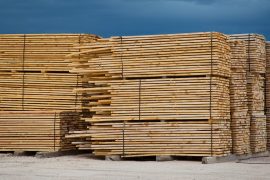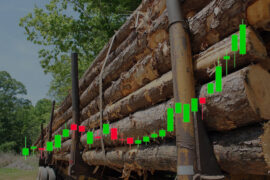In this article, we’re going to explain everything about seasoned wood. You have probably heard the term “seasoned wood”. If you’re exploring the best firewood options for your indoor fireplace or wood stove, then you have probably heard strange stories about seasoned firewood. Everything you need to know about seasoned wood is here.
- What is seasoned wood?
- How to tell if the wood is seasoned?
- What are different ways of seasoning wood?
We will also talk about drying woods and how to season firewood.
What exactly is seasoned firewood? Stay with us.
Moisture of Wood

Wood is a hygroscopic substance, meaning it is a material that absorbs water from its surroundings.
In the definition of wood moisture, it should be said: The moisture content of wood means the relationship between the mass of water in it and the mass of the dry wood (wood without the water).
For example, if a piece of wood weighing 2kg contains 1kg of water, the moisture percentage of wood is then 100%. The greenwood starts to dry automatically after cut to reach the equilibrium moisture content. The equilibrium moisture content of wood is a state depended on the relative air moisture, in which the moisture content of the wood remains steady.
Lichtenberg Wood Burning eBook

Download Lichtenberg Wood Burning eBook
One of the modern techniques for creating wooden artwork is called Lichtenberg wood Burning. In this eBook, we are going to introduce this newfound art to you.
This technique is known with some different names such as Lichtenberg wood burning, fractal wood burning, and electricity wood art.
This technique should not be confused with wood burning art or pyrography. The art of pyrography on wood is the art of creating motifs and designs by burning with hot metal tools on objects such as wooden surfaces.
Lichtenberg burning is a wood-burning technique for creating designs with electricity.
This eBook is a comprehensive guide on Lichtenberg Wood Burning. All you need to know for Lichtenberg Wood Burning is here.
This is a limited-time offer, order now to get access to the future eBook releases.
When wood is used as a construction material in woodworking projects, the moisture of wood should be between 20% and 25% depending on the humidity of the air.
What is Seasoned Wood?
The seasoned wood definition is simple. We saying that wood has been seasoned when it has been left out to dry for a long period of time and the moisture from the wood’s cells have evaporated completely. See Everything About Moisture Content of Wood.
The word “completely” is the key to this definition. You can find the dried branches of a tree in your garden. These woods are seemingly dry but still have a lot of moisture or sap. They are not completely dry.
Seasoned wood is the opposite of Greenwood. The Greenwood has been freshly cut and its internal moisture is at its maximum. Seasoned wood is also distinguished from kiln-dried wood which has had the moisture removed quickly through a kiln.
Properly seasoned wood should have a moisture content below 20 percent. This amount of moisture is very important when you want to use it as firewood. Firewood with moisture higher than 20 percent may eventually burn, but it is hard to start and keep burning, In addition, it produces a lot of smoke.
Seasoning Process
Seasoning is the process of reducing and eliminating the moisture content from wood before use. It also is known as the wood drying process or wood seasoning.
This process is done to minimize problems when used in woodworking to provide wood warping or to provide less smoke and more uniform combustion when used as firewood. The seasoning process actually turns greenwood into dry wood.
The length of the process depends on the wood types used along with relative humidity in the area where the wood is seasoned.
When the drying is done in a kiln, the product is known as kiln-dried timber, whereas air drying is the more traditional method.
Methods of Drying Wood
Air Seasoning

Air seasoning or outdoor wood drying is one of the oldest ways of removing the moisture content of the wood. This way is actually a traditional method and takes six to nine months. Of course, the time required for complete drying of the wood boards depends on the following factors:
- Species of wood
- The initial moisture content
- The thickness of the boards
- The environmental conditions
The air seasoning method is the simplest and cheapest method of drying wood, but achieving an excellent result in this way is very time-consuming.
Kiln Seasoning
The most common and effective commercial process for producing seasoned wood is the kiln seasoning method. Drying in the kiln has advantages like high-speed drying and removing bacteria inside the wood.
In a progressive kiln, timber enters at one end and travels on through chambers with special temperature conditions to dry the wood completely. Kiln-dried wood is really dry.
This method ensures that the moisture content of the wood is below 20%. Therefore, this method is more suitable for producing seasoned firewood than air seasoning.
In the air seasoning method, the moisture level will almost always be higher than kiln-dried firewood. One of the disadvantages of this method is the high cost of providing energy to heat.
Solar Kiln Seasoning
If you do not have enough money for the costs of energy, you can use a solar Kiln. This is a combination of the two methods above.
In this method, the heat of the sun is used to heat up Kiln. Some solar kilns have insulation to retain heat at night when there isn’t sunlight. This process takes approximately twice longer as the method of kiln seasoning.
Features of Seasoned Wood
How to tell when the wood is seasoned? Here are some points that you can identify seasoned wood with the help of them. These include the appearance and traits of seasoned wood. If you want to use wood as firewood, knowing these will help you because burning greenwood can be dangerous. It creates a lot of smoke, creosote and will be hard to start the fire.
Color
In most cases, greenwood has refreshing colors, and the loss of moisture will opaque over time. Seasoned wood usually develops a faded gray color, after losing moisture. In the picture below, you can see the difference between greenwood and seasoned wood.

Cracking
In addition to color, deep cracks are another sign of seasoned wood. You may see cracks on dry pieces of seasoned wood which extend from the center of the log and reaches out towards the edges. But this is not a determining factor.
Some seasoned logs may not have a crack and some cracked logs may still be too green. However, this can help you identify dry wood.
Weight
Seasoned wood loses its moisture content and becomes very lighter than greenwood. Some types of wood like softwoods have a very high moisture content, so the weight difference will be more noticeable than other wood types.
Sound
You can even listen to the sound of wood and identify seasoned wood. It will introduce himself.
Wet wood produces a dull thud sound when hits another piece and seasoned wood will make a hollow sound when two pieces hit together. Of course, this way requires a bit of experience.
Moisture Meter

If you’re still not sure wood is dry enough to use as seasoned firewood, you can buy a moisture meter to test the wood. Usually, Hardware stores and woodworking suppliers sell this device. When the device connects into the wood, your meter’s reading number should be below 20 percent. Moisture between 10 and 20 percent is ideal.
Best Seasoned Firewood
If you are planning to buy firewood for your fireplace, your question is probably what is the best firewood for fireplaces?
The answer to this question depends on the type of wood and the quality of drying wood.
Dense hardwoods like maple wood, Oakwood, and walnut wood have a higher energy content per cord.
So firewood made of these types of wood can release more heat per firebox load. Also unlike softwoods like birch wood, pinewood, spruce wood, and poplar wood, they can produce coal beds.
Softwoods are less dense, burn faster, and do not produce a long-lasting fire.
An exception is always there, see also white pine firewood as a good choice.







Comments
Pingback: How to Burn Green Wood? - Wood Dad